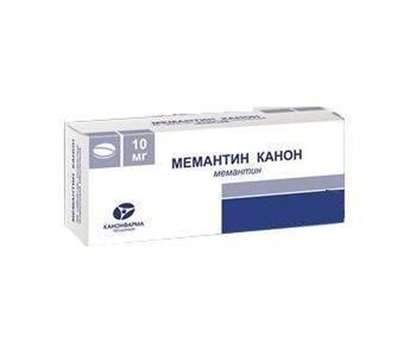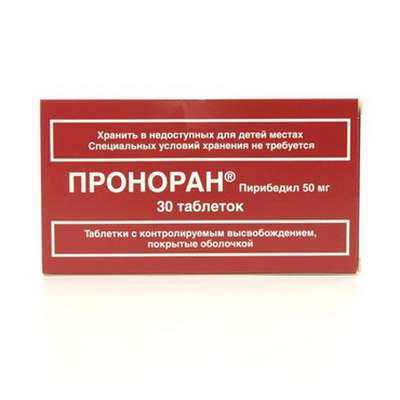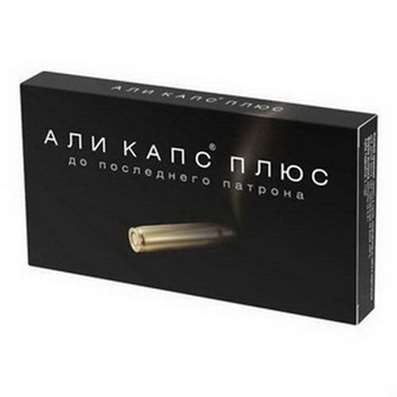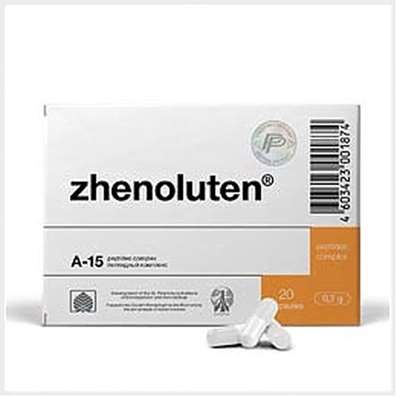Instruction for use: Cisatracurium besilate (Cisatracurii besilas)
I want this, give me price
chemical name
(1R, 1'R, 2R, 2'R) -2,2 '- [1,5-Pentanediyl-bis [oxy (3-oxo-3,1-propanediyl)]] - bis- [1- [ (3,4-dimethoxyphenyl) methyl] -1,2,3,4-tetrahydro-6,7-dimethoxy-2-methyl] isoquinolinium dibenzenesulfonate
Pharmacological group
n Cholinolytics (muscle relaxants)
The nosological classification (ICD-10)
Z100 * CLASS XXII Surgical practice
Abdominal surgery, adenomectomy, Amputation, Coronary angioplasty, Angioplasty of the carotid arteries, Antiseptic skin treatment for wounds, Antiseptic Hand, Appendectomy, atherectomy, Balloon coronary angioplasty, Vaginal hysterectomy, The coronary bypass, Interventions in the vagina and cervix, Interventions on the bladder, Intervention in the mouth, Restoration and reconstructive surgery, Hand hygiene of medical personnel, Gynecologic surgery, Gynecological intervention, Gynecological surgery, Hypovolemic shock during operations, Disinfection of purulent wounds, Disinfection of wounds edges, Diagnostic intervention, Diagnostic procedures, Cervical Diathermocoagulation, Long-surgery, Replacing the fistula catheters, Infection in orthopedic surgery, Artificial heart valve, cystectomy, Short-term outpatient surgery, Short-term operation, Short surgical procedures, Krikotireotomiya, Blood loss during surgery, Bleeding during surgery and in the postoperative period, Kuldotsentez, laser photocoagulation, laser coagulation, retinal laser coagulation, Laparoscopy, Laparoscopy in Gynecology, CSF fistula, Small gynecological operations, Small surgical procedures, Mastectomy and subsequent plastic, mediastinotomy, Microsurgical operations on the ear, Mukogingivalnye operation, suturing, Minor surgery, neurosurgical operation, Immobilization of the eyeball in ophthalmic surgery, testectomy, pancreatectomy, Perikardektomiya, The period of rehabilitation after surgery, The period of, convalescence after surgery, Percutaneous transluminal coronary angioplasty, Pleural thoracentesis, Pneumonia postoperative and posttraumatic, Preparation for surgical procedures, Preparation for surgery, Preparation of the surgeon's hands before surgery, Preparation of the colon for surgical procedures, Postoperative aspiration pneumonia in neurosurgical and thoracic surgery, Postoperative nausea, Postoperative bleeding, postoperative granuloma, postoperative shock, The early postoperative period, myocardial revascularization, Radiectomy, gastric Resection, bowel resection, uterine Resection, liver Resection, enterectomy, Resection of part of the stomach, Reocclusion of the operated vessel, Bonding tissues during surgical procedures, Removal of sutures, Condition after eye surgery, Condition after surgery, Condition after surgery in the nasal cavity, Condition after gastrectomy, Status after resection of the small intestine, Condition after tonsillectomy, Condition after removal of the duodenum, Condition after phlebectomy, Vascular surgery, Splenectomy, Sterilization of surgical instruments, Sterilization of surgical instruments, sternotomy, Dental surgery, Dental intervention in periodontal tissues, strumectomy, Tonsillectomy, Thoracic surgery, total gastrectomy, Transdermal intravascular coronary angioplasty, Transurethral resection, Turbinektomiya, Removal of a tooth, cataract surgery, Removal of cysts, tonsillectomy, Removal of fibroids, Removing the mobile primary teeth, Removing polyps, Removing broken tooth, Removal of the uterus body, Removal of sutures, Urethrotomy, Fistula likvoroprovodyaschih ways, Frontoetmoidogaymorotomiya, Surgical infection, Surgical treatment of chronic limb ulcersm, Surgery, The surgery in the anal area, The surgery on the colon, Surgical practice, The surgical procedure, Surgical interventions, Surgery on the gastrointestinal tract, Surgical procedures on the urinary tract, Surgical procedures on the urinary system, Surgical intervention of the genitourinary system, Surgical procedures on the heart, Surgical manipulation, surgery, Surgery on the veins, Surgical intervention, Vascular surgery, Surgical treatment of thrombosis, cholecystectomy, Partial gastric resection, transabdominal hysterectomy, Percutaneous transluminal coronary angioplasty, Percutaneous transluminal angioplasty, Coronary artery bypass, tooth Extirpation, Extirpation of milk teeth, pulpectomy, pulsative cardiopulmonary bypass, tooth Extraction, teeth Extraction, cataract extraction, Electrocoagulation, endourological intervention, episiotomy, Etmoidotomiya, Complications after tooth extraction
Z40 Prophylactic surgical intervention
Inhalation anesthesia, Intratracheal Intubation, Intubation of the trachea, Surface anesthesia in ophthalmology
Code CAS 96946-42-8
Characteristics of the substance Terkurony
Synthetic substance, one of the 10 isomers of atracurium besylate. Molecular weight 1243.51; The solution has a pH of 3.25-3.65.
Pharmacology
Pharmacological action - miorelaksiruyuschee, nedepolyarizuyuschee, n-holinoliticheskoe.
He competes with acetylcholine for the cholinergic receptors of the end plates and blocks neuromuscular transmission (nondepolarizing muscle relaxant of medium duration of action). Causes paralysis of skeletal muscles, incl. Respiratory, but does not affect the consciousness and threshold of pain sensitivity.
The time of appearance of the initial effect sufficient for intubation depends on the dose and in adult patients is 2 and 1.5 min after administration at doses of 0.15 and 0.2 mg / kg, respectively. The time to reach the maximum effect is dose-dependent and against opioid anesthesia is 3.5 and 2.9 minutes (at doses of 0.15 and 0.2 mg / kg) in adults and 2.8 minutes (after administration of 0.1 mg / Kg) in children 2-12 years of age. Miorelaxation continues for 55-65 minutes (at a dose of 0.15-0.2 mg / kg) in adult patients and 28 minutes at a dose of 0.1 mg / kg in children. The duration of muscle relaxation in elderly patients and in violation of liver and kidney function does not change, but can be prolonged with inhalation anesthesia (enflurane, isoflurane, etc.), with acidosis and hypothermia. Consecutive administration of maintenance doses is not accompanied by a progressive increase in the duration of the effect. The recovery of neuromuscular transmission by 25% occurs 55-65 minutes and 95% at 76-81 min after administration at a dose of 0.15-0.2 mg / kg to adults and, respectively, 28 and 46 minutes after administration in the Dose of 0.1 mg / kg for children.
After the onset of spontaneous recovery of the neuromuscular transmission, its rate does not depend on the total dose administered. In adults and children over 2 years of age, administration in the form of continuous infusion at a constant rate is possible. In this case, the severity of muscle relaxation and the speed of spontaneous recovery of neuromuscular transmission are comparable with those after a single bolus administration.
The volume of distribution in the equilibrium state against the background of opioid anesthesia is 145 ml / kg, increases with inhalation anesthesia (by 21%) and in elderly patients.
At 80%, Hoffman is eliminated (a chemical process that depends on pH and temperature, independent of renal and hepatic function) and biotransformation in the liver (to an insignificant extent) with the formation of primary metabolites - laudanosine and monocovietary acrylate. Monocathera acrylate is hydrolyzed by nonspecific plasma esterases and Hoffman's elimination. Laudanosine is demethylated with the subsequent formation of conjugates with glucuronic acid. The concentrations of metabolites increase with long-term use of cisatrakurium besilata. All metabolites do not have the ability to block neuromuscular transmission. Laudanosine can cause transient hypotension and, in high doses, CNS excitation in animals. The main way of elimination is the independent elimination of Hoffman. Kidney and liver take minimal part in eliminating cisatracurium, but are the main organs in eliminating its metabolites (T1 / 2 metabolites increase in patients with impaired renal and hepatic function). After a single IV injection at a dose of 0.1-0.4 mg / kg T1 / 2 is 22-29 minutes (increases in elderly patients and with hypothermia), plasma Cl - 4.57 ml / min / kg. It is excreted by the kidneys (95%) mainly in the form of metabolites and less than 10% unchanged. About 4% of the dose is excreted with feces. Repeated administration does not cause tachyphylaxis and is not accompanied by a cumulation of the myorelaxing effect or an increase in the duration of the action.
In doses exceeding the average effective 2-8 times, does not affect blood pressure and heart rate, does not cause histamine release and malignant hyperthermia.
Indications
Miorelaxation during surgical interventions, intubation of the trachea, ventilation.
Contraindications
Hypersensitivity, incl. To other benzylquinoline derivatives (including atracurium, myvacuria).
Restrictions on the use
Violation of acid-base balance or electrolyte balance, burns, carcinomatosis, neuromuscular diseases (including myasthenia gravis, myasthenic syndrome) or other conditions that can lead to prolonged neuromuscular blockade, hemiparesis, paraparesis, age under 2 years (There is insufficient clinical experience).
Aplication in pregnancy and lactation
In pregnancy and breastfeeding, the application is only possible if the expected effect of the application exceeds the potential harm to the fetus and the baby. Adequate and strictly controlled studies in pregnant women are not carried out, there is no information on the penetration into breast milk.
In animal studies, embryotoxic and teratogenic effects of subparalytic (4 mg / kg sc) and paralytic (0.5-1 mg / kg iv) doses were not detected.
The action category for fetus by FDA is B.
Side effects
Allergic reactions (including anaphylaxis), rash (0.1%), muscle weakness, myopathy, bradycardia (0.4%), hypotension (0.2%), flushing of the face (0.2%), bronchospasm (0 , 2%).
Interaction
Chemically unstable when diluted in Ringer's lactated solution, incompatible with alkaline solutions, for example with sodium thiopental. The effect is enhanced by means for inhalation anesthesia (halothane, diethyl ether, enflurane, isoflurane), other nondepolarizing muscle relaxants, antibiotics (aminoglycosides, polymyxins, spectinomycin, tetracyclines, lincomycin and clindamycin); Antiarrhythmics (propranolol, lidocaine, procainamide, quinidine), diuretics (furosemide, thiazides), magnesium salts, lithium, ganglion blockers (hexamethonium, etc.), local anesthetics. Weaken the effect of the previous long-term use of phenytoin or carbamazepine. Preliminary administration of suxamethonium does not affect the duration of the neuromuscular block. The introduction of suxamethonium to increase the duration of the neuromuscular block caused by nondepolarizing muscle relaxants can lead to a prolonged and complex blockade, which can be difficult to eliminate with the help of anticholinesterase agents. Incompatible with ketorolac, trimetamol, propofol.
Overdose
Symptoms: lengthening of muscle relaxation.
Treatment: maintenance of adequate ventilation until the recovery of adequate neuromuscular conduction; Specific therapy: anticholinesterase drugs (neostigmine 0.04-0.07 mg / kg) are administered only after the onset of spontaneous reduction simultaneously with anticholinergics (atropine). Antagonists (neostigmine, etc.) should not be used with a complete neuromuscular block (peripheral neurostimulation is recommended to confirm recovery). It is necessary to carry out mechanical ventilation until the breathing is fully restored.
Routes of administration
In / in, bolusno.
Precautions
Prior to the restoration of adequate spontaneous breathing, it is necessary to maintain lung ventilation and oxygenation of the blood. When signs of spontaneous recovery of neuromuscular conduction appear, it can be accelerated by the administration of anticholinesterase agents.
Causes paralysis of the respiratory and other skeletal muscles, but does not affect the consciousness or pain threshold. Should be administered only by an anesthesiologist or a specialist with experience of using muscle relaxants, with the possibility of intubation of the trachea, ventilation and adequate oxygenation of the blood.
Since it refers to substances with an average duration of action, it is not recommended to use for emergency intubation of the trachea. It is recommended to conduct monitoring of neuromuscular conduction using peripheral neurostimulation; Additional doses should not be administered until a reliable response to neurostimulation is obtained; If the response is not caused, the administration should be suspended until the beginning of recovery of neuromuscular conduction.
May have a more pronounced and prolonged effect in patients with neuromuscular diseases (eg myasthenia gravis, myasthenic syndrome), with carcinomatosis; In these cases, the use of doses above 0.02 mg / kg is not recommended.
Possible decrease in the effectiveness of cisatracurium in patients with burns, hemi and paraparesis (in the affected limbs).
Patients with kidney and liver involvement: clinically significant differences in recovery profiles are absent. In patients with terminal stages of liver damage, the initial effect occurs 1 minute later, and if the kidney function is impaired, it lasts 1 minute longer.
It should be borne in mind that in children 2-12 years of age, effective doses are lower, the initial effect is faster, the duration of action and the recovery time of neuromuscular transmission are less than in adults.

 Cart
Cart





